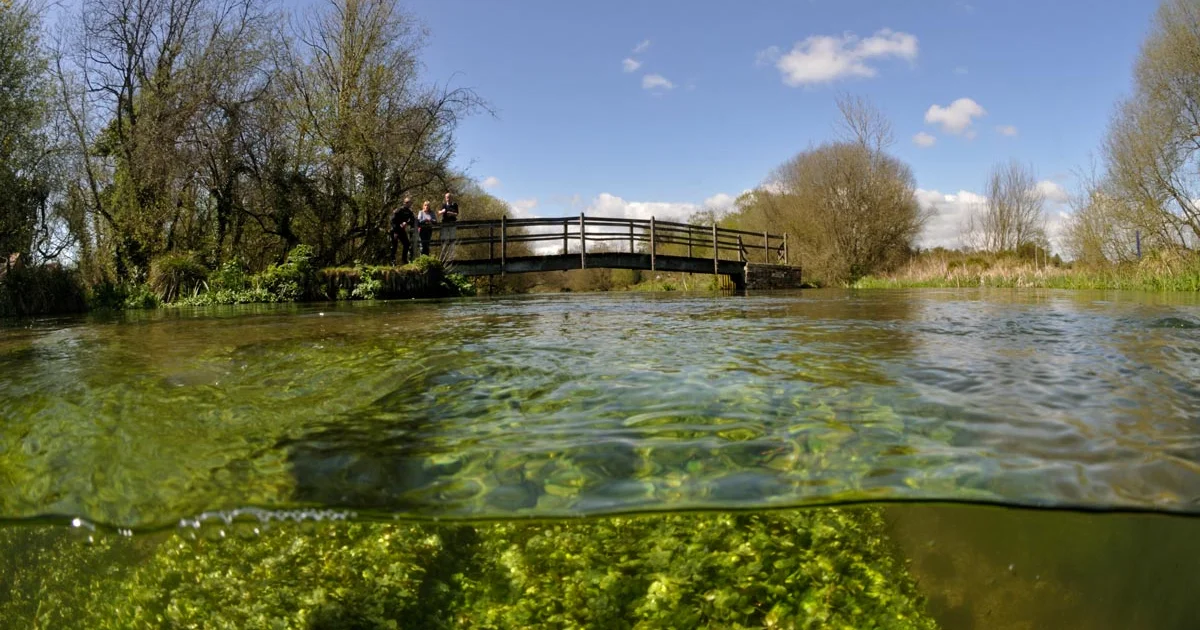
Rivers in Focus: The Critical Role of Water Quality in Environmental Health
Rivers, the sinuous veins of our planet, play a pivotal role in maintaining the delicate balance of environmental health. Beyond their picturesque landscapes, these waterways are essential components of ecosystems, providing habitat for diverse species and supporting various human activities. In this exploration, we turn our attention to the critical role of water quality in the environmental health of rivers, unraveling the intricate connections between the vitality of these liquid landscapes and the well-being of our planet.
The Heartbeat of Ecosystems: Understanding Water Quality
Water quality serves as a barometer for the overall health of river ecosystems. It encompasses a spectrum of physical, chemical, and biological characteristics that determine the suitability of water for supporting life. From the clarity of the water to the levels of dissolved oxygen, nutrient concentrations, and the presence of pollutants, each aspect contributes to the complex tapestry of water quality.
1. Physical Indicators: Clarity and Turbidity
The physical indicators of water quality provide insights into the transparency and composition of river water. Clarity, often measured using secchi disks, indicates the degree of light penetration and influences the photosynthetic activity of aquatic plants. Turbidity, on the other hand, measures the presence of suspended particles, affecting water quality and aquatic habitats. High turbidity levels can hinder the penetration of light and impact the health of underwater ecosystems.
2. Chemical Components: Dissolved Oxygen, Nutrients, and pH
Chemical parameters are key determinants of water quality, influencing the overall ecological health of rivers. Dissolved oxygen levels are crucial for the survival of aquatic organisms, including fish and macroinvertebrates. Nutrient concentrations, particularly nitrogen and phosphorus, impact the growth of algae and aquatic plants. Excessive nutrient levels can lead to eutrophication, causing algal blooms and disrupting the balance of the ecosystem. pH levels, indicating the acidity or alkalinity of water, further influence the solubility of minerals and the physiology of aquatic organisms.
3. Biological Diversity: A Reflection of Environmental Health
Biological indicators serve as direct reflections of environmental health. The biodiversity of river ecosystems, including the variety and abundance of species, is a key measure of their vitality. Diverse assemblages of fish, insects, and microorganisms indicate a healthy and resilient ecosystem. Conversely, declines in biodiversity may signal environmental stressors such as pollution, habitat degradation, or altered flow regimes.
The Impact of Human Activities: Anthropogenic Stressors on Water Quality
Human activities have profound effects on river water quality, introducing anthropogenic stressors that challenge the resilience of ecosystems. Urbanization, industrial discharges, agriculture, and improper waste disposal contribute pollutants such as heavy metals, chemicals, and nutrients to river systems. These stressors can compromise water quality, degrade habitats, and pose risks to both aquatic life and human communities.
1. Urban Runoff and Pollution: A Challenge for Water Quality
Urban areas contribute to water quality challenges through stormwater runoff, which carries pollutants such as oil, heavy metals, and debris into rivers. Impermeable surfaces in urban landscapes prevent natural filtration, exacerbating the impact of pollutants on water quality. Effective stormwater management and green infrastructure practices are essential for mitigating urban runoff and preserving the health of rivers.
2. Agricultural Runoff: Nutrient Loading and Algal Blooms
Agricultural practices, including the use of fertilizers and pesticides, contribute to nutrient loading in rivers. Excessive nutrients, particularly nitrogen and phosphorus, can lead to algal blooms. These blooms disrupt ecosystems, deplete oxygen levels, and harm aquatic life. Sustainable agricultural practices, precision farming, and riparian buffer zones are crucial for minimizing the impact of agricultural runoff on water quality.
3. Industrial Discharges: Contaminants and Water Quality
Industrial activities release a variety of contaminants into rivers, including chemicals, heavy metals, and toxins. These discharges can have severe implications for water quality, affecting both the physical and chemical parameters. Stringent regulations, responsible waste management, and the implementation of cleaner production practices are essential for reducing the environmental impact of industrial discharges.
Preserving Environmental Health: The Importance of Monitoring and Conservation
Preserving the environmental health of rivers requires a proactive approach centered around monitoring, conservation, and sustainable management practices.
1. Monitoring Water Quality: Early Detection and Rapid Response
Regular monitoring of water quality is a cornerstone of environmental conservation. Early detection of changes in physical, chemical, and biological parameters allows for rapid response to emerging issues. Advances in technology, such as remote sensing and real-time monitoring stations, enhance our ability to gather timely and accurate data, enabling more effective conservation strategies.
2. Riparian Conservation: Protecting the Riverbanks
Riparian zones, the areas along riverbanks, play a crucial role in preserving water quality. Vegetation in these zones stabilizes soil, prevents erosion, and filters pollutants before they reach the water. Conservation efforts should focus on maintaining or restoring riparian habitats, creating buffer zones that contribute to the overall health of river ecosystems.
3. Sustainable Water Management: Balancing Human Needs and Environmental Health
Sustainable water management practices are essential for balancing the competing demands on river systems. This includes responsible water extraction for agriculture, industry, and human consumption. Implementing water conservation measures, reevaluating water allocation policies, and fostering a culture of responsible water use are integral components of sustainable water management.
4. Community Engagement: Fostering Environmental Stewardship
Engaging communities in the conservation of river ecosystems is a powerful tool for promoting environmental stewardship. Citizen science initiatives, educational programs, and community-led conservation projects empower individuals to actively contribute to the preservation of water quality. A sense of shared responsibility fosters a collective commitment to safeguarding the lifelines of our planet.
Conclusion: Guardians of Liquid Landscapes
As we focus on rivers and their critical role in environmental health, we assume the role of guardians of liquid landscapes. Recognizing the interconnectedness of water quality, biodiversity, and human activities, we embark on a journey to preserve these vital ecosystems. By monitoring, conserving, and actively participating in sustainable practices, we contribute to the resilience and well-being of rivers, ensuring that they remain vibrant and essential components of our planet’s environmental health for generations to come.
